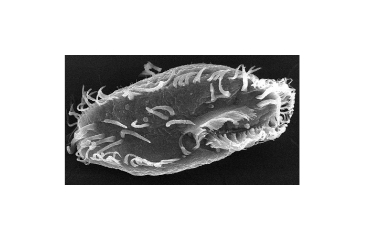- Series:Animals, God’s Design, Transcript English
Luke 18:1
“Then He spoke a parable to them, that men always ought to pray and not lose heart…”
 Normally they bother no one. The creatures, called protozoan ciliates, quietly go about their business in water‑filled tree holes, eating other microorganisms. The protozoans themselves are an important food for mosquito larvae.
Normally they bother no one. The creatures, called protozoan ciliates, quietly go about their business in water‑filled tree holes, eating other microorganisms. The protozoans themselves are an important food for mosquito larvae.
However, as mosquito wigglers begin to populate the water, the protozoans turn into deadly monsters. Secretions from the mosquito larvae alert the protozoans to the presence of the larvae. They begin rapidly growing cells and their appearance changes. The result is a completely different creature that is well‑designed to infect mosquito larvae and kill them. In other words, for self‑protection, the prey becomes parasite, making the would‑be predator its prey. Scientists are seeking better understanding of this in the hope of developing better natural mosquito controls.
Scientists have known for some time that some microorganisms respond to predators. The most common protective response is to grow spines or some other projection. This makes the prey difficult to eat. But the strategy used by the protozoan ciliates is the most extreme self‑protective response known.
There is no creature in God’s creation that is so unimportant that God has failed to give it ways to make its living. Many creatures have been given what seem to be very uncreative ways to live. However, the fact that even these seemingly unimportant creatures have special gifts from God’s creativity gives witness to His care for everything He has made.
Prayer: Dear Lord, though I cannot understand how You could have paid so much detailed attention to so many things in the six days of creation, help me to remember Your constant attention to everything when I pray. Amen.
REF.: Revenge of the placid protozoan. Science News, v. 131, June 4, 1988. p. 363. Photo: Scanning electron microscope view of Oxytricha trifallax. (PD)
© 2023 Creation Moments. All rights reserved.
